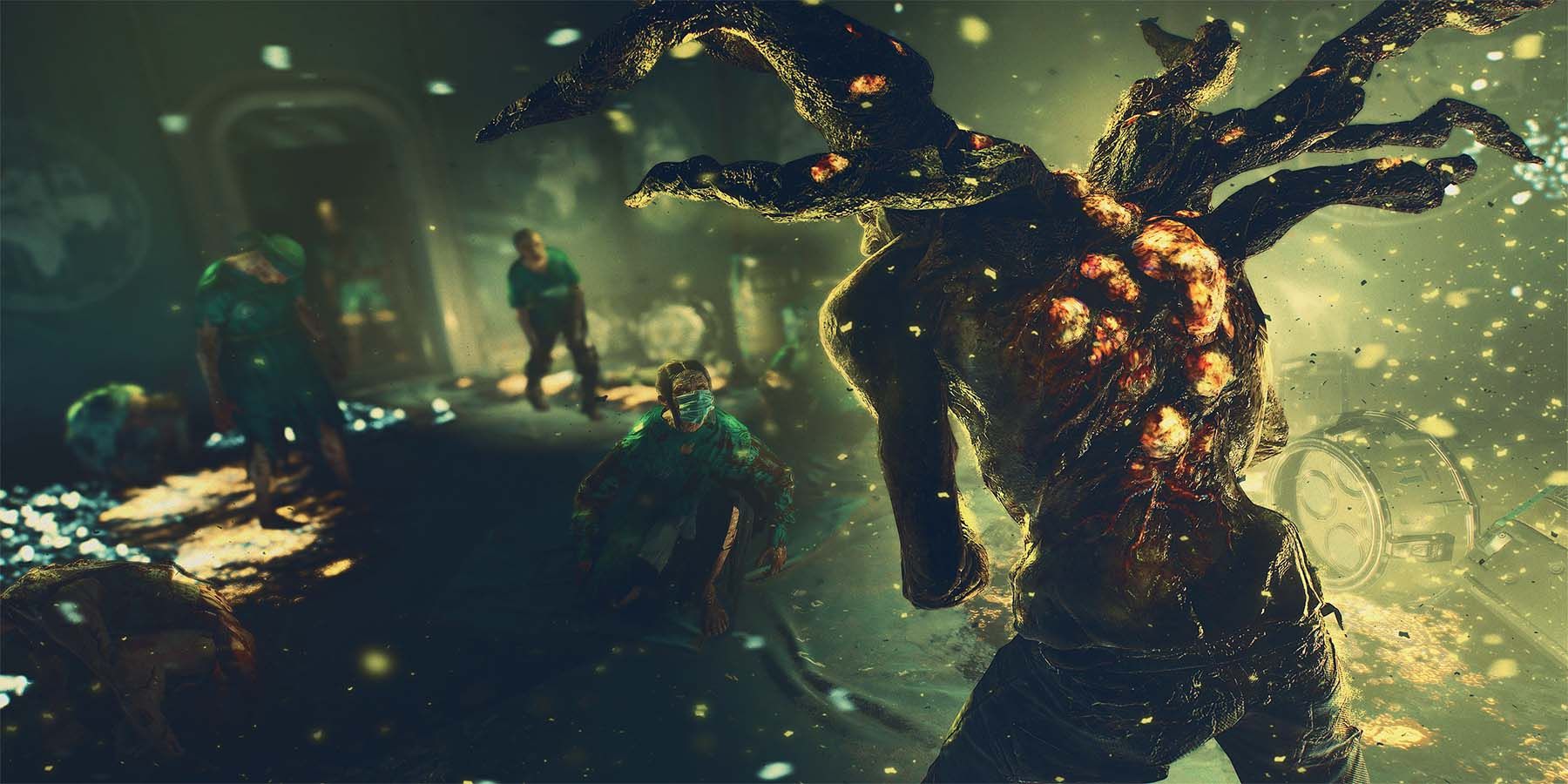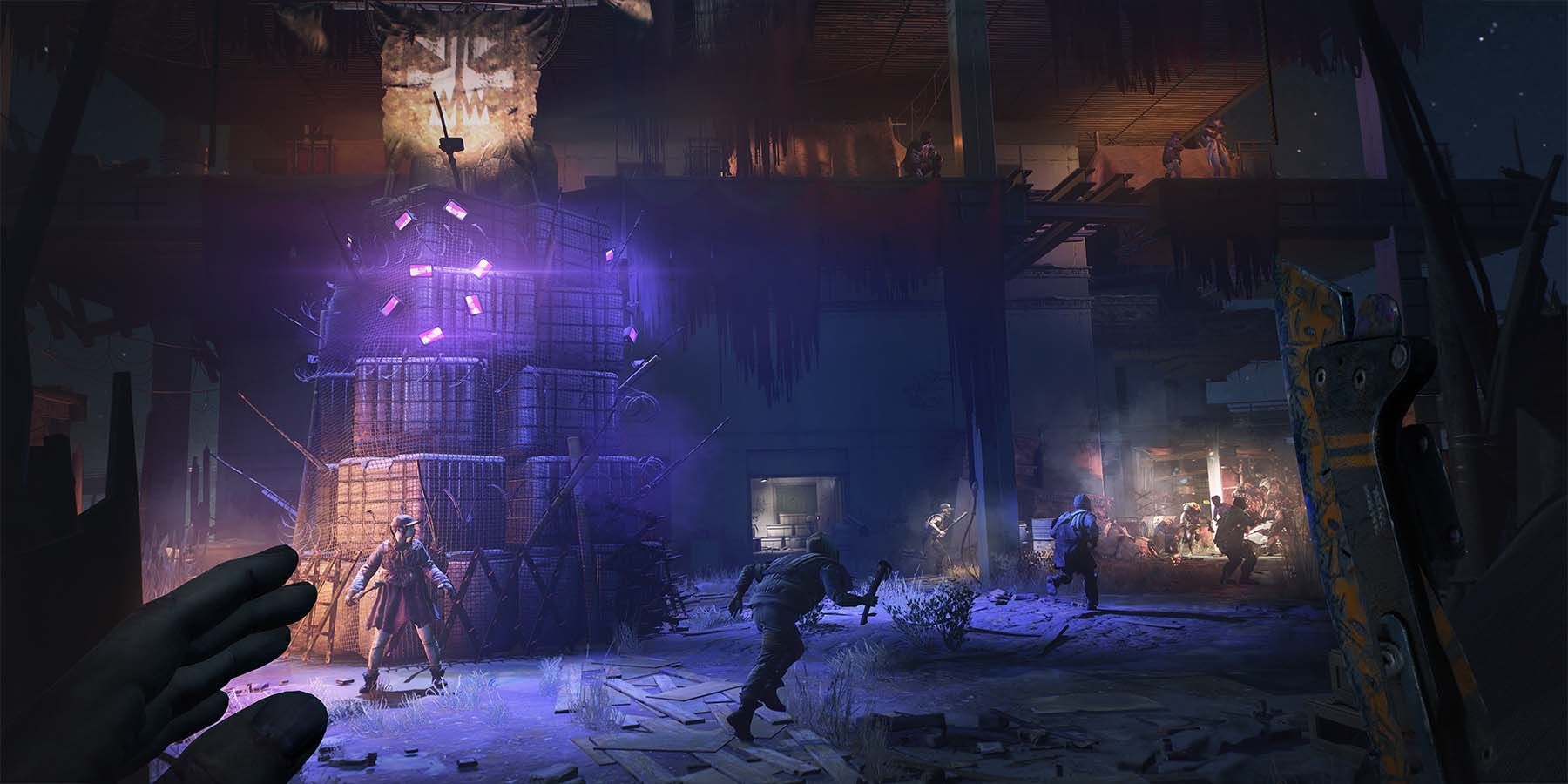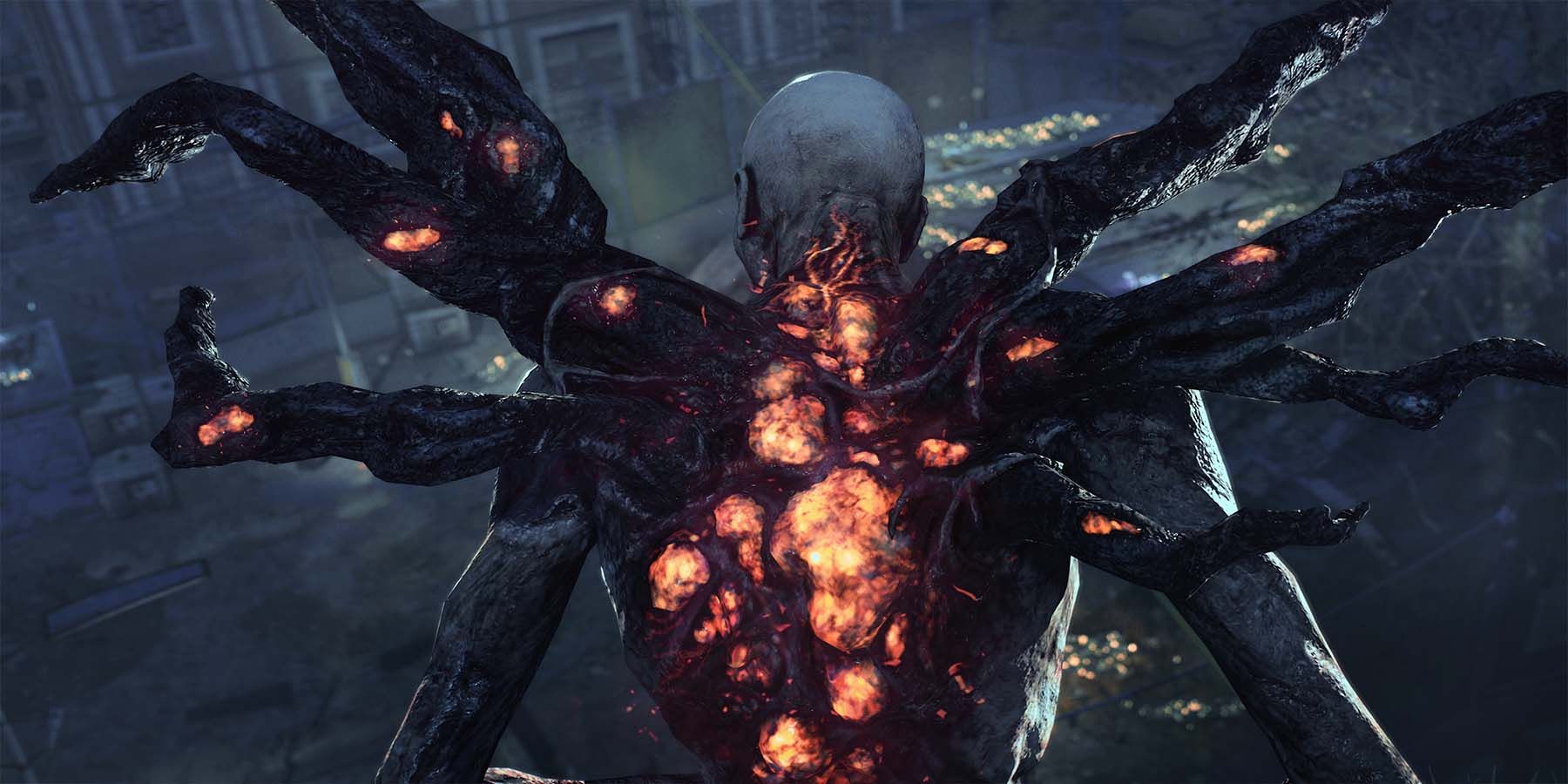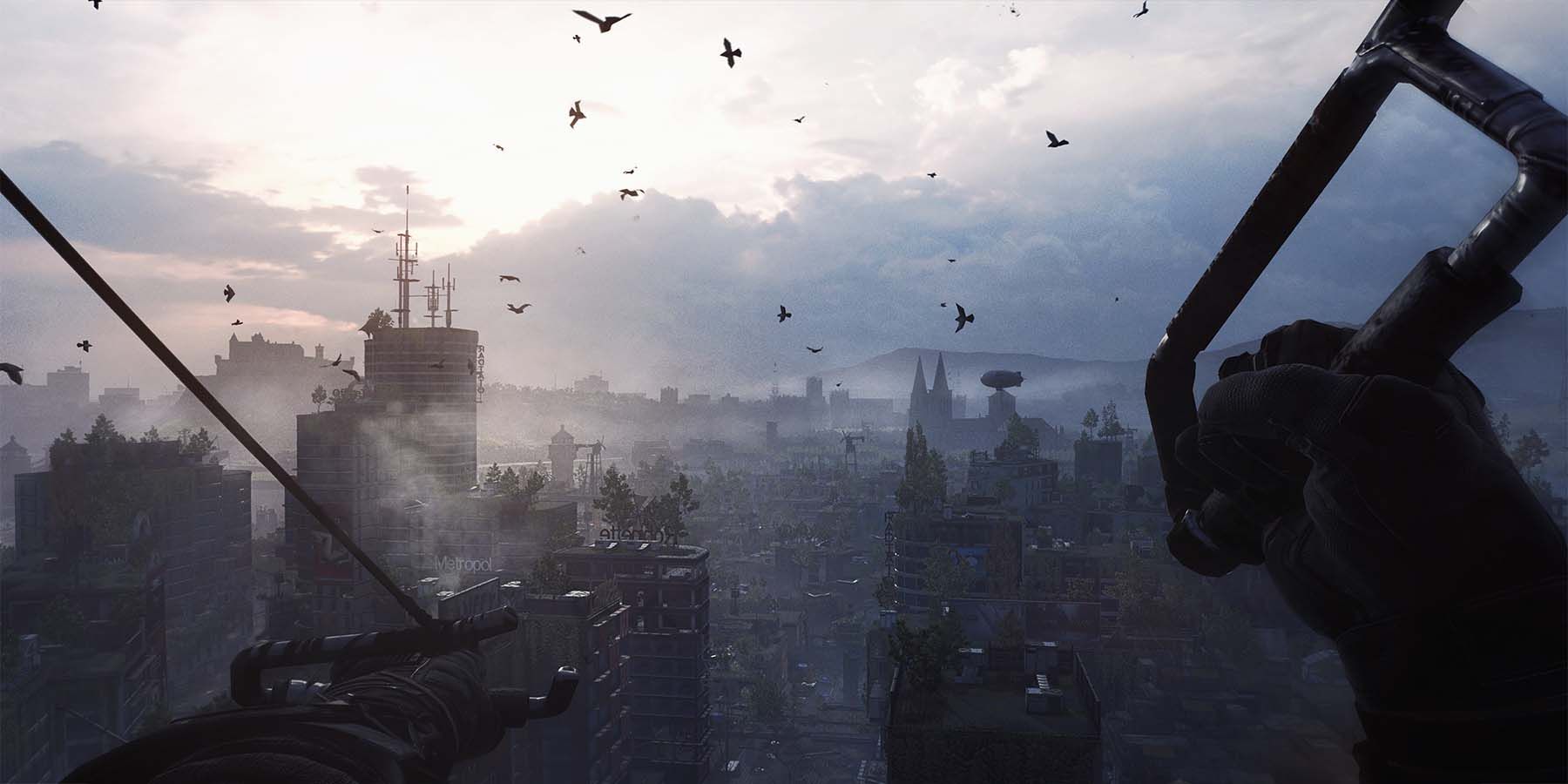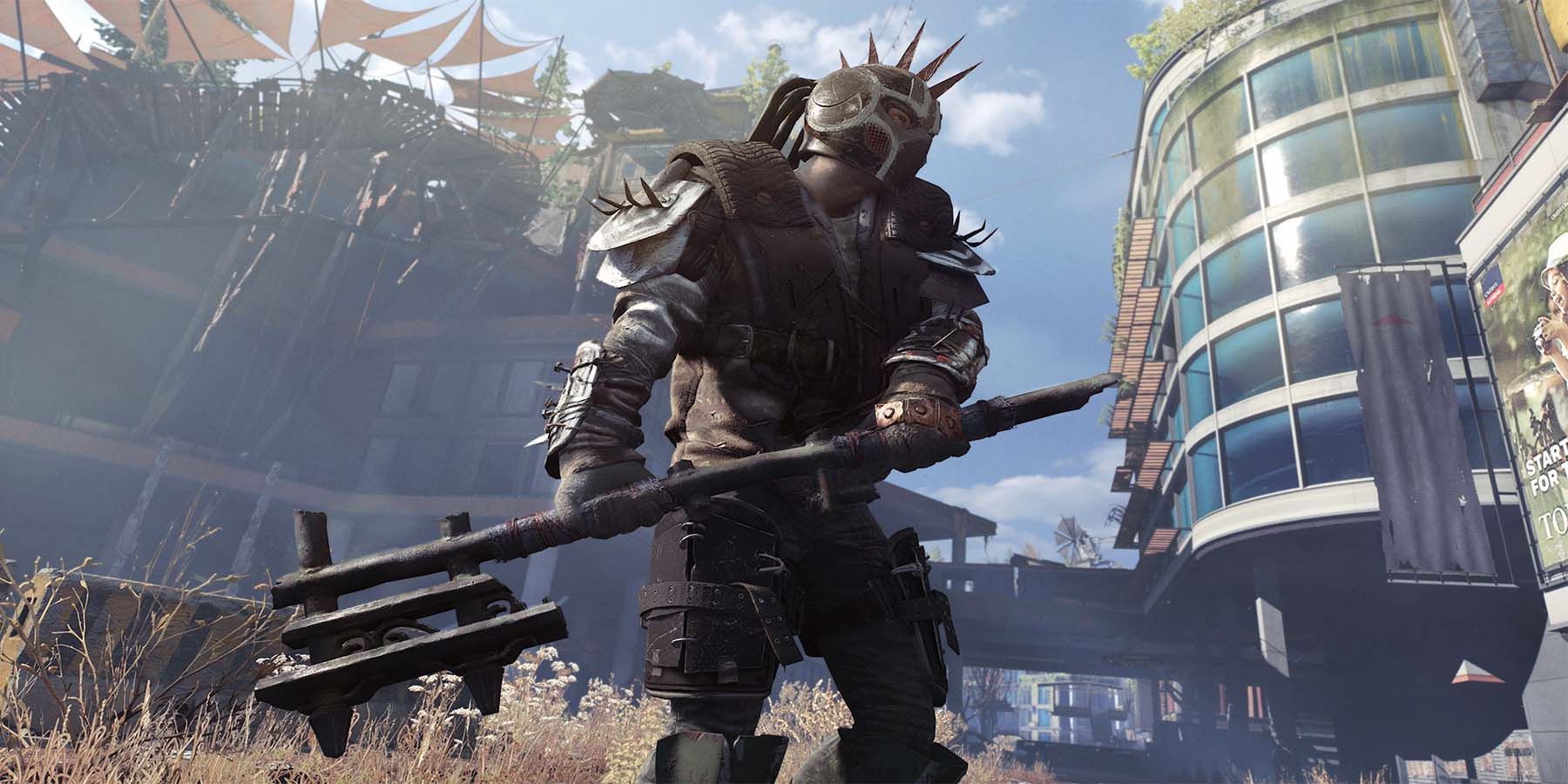The last few months have been interesting for Dying Light 2, the upcoming zombie-slaying action game from developer Techland. Having been delayed a few times throughout its development, some have begun to point out similarities to Cyberpunk 2077's troubled release. However, Game Rant recently went hands-on with Dying Light 2 during a preview event, and we walked away feeling positive about its progress.
During that same preview event, Game Rant also sat down with Lead Designer Tymon Smektała to talk about how the sequel has evolved beyond the original, touching on changes to the parkour mechanics, combat, world, and more. What follows is a transcript of that interview, going over the major details of what fans will find when they play Dying Light 2: Stay Human. Portions of this interview have been edited for clarity.
How Dying Light 2 has Evolved
GR: There’s a lot more depth to everything this time around. Can you give me some insight into where the team started with evolving the gameplay mechanics in Dying Light 2?
Smektała: "Well, actually, what we did is at the start of development we did an analysis of what we did in Dying Light one; based on players’ feedback, media feedback, and our own internal feedback [from the] internal analysis of what we did. I think when you are a creative person, when you make something, I think you are your worst critic because you see the most things you would like to improve. And we actually did that. There was a huge list of things we would like to fix for parkour… [a] huge list of things we would like to improve when it comes to combat, and when it comes to the day and night cycle.
So we started with basically saying to ourselves, ‘Hey guys, we did a sh*tty job on the first game so now let’s do better,’ of course half-jokingly. But, basically, there were a lot of things we wanted to improve, and I think one of the most important things for us was to add more meaning to the day and night cycle and combine parkour and combat way more than we did in the first game. The first game, it was built on combat, parkour, and the day and night cycle. This game, is parkour, combat, day and night cycle, and choices and consequences. But for parkour and combat in the first game, the flow of it was ‘you are running, running, running.’ Then, going into a combat encounter, stopping, and fighting.
What we wanted to do with Dying Light 2, we wanted to give you the opportunity to combine parkour and combat together. That’s why we have this thing called parkour-combat. Where you can stagger an enemy, jump on it, use it as a springboard to kick another guy, jump off another guy, then maybe do a ground-pound and land on the rest. So, definitely, when it comes to systems, mechanics, one of the goals was to combine parkour systems and combat mechanics together. And when it comes to day and night, what we realized by analyzing that data, is that a lot of people were basically skipping the night because it was too scary for them, and they didn’t have much incentive to go out at night. So, we fixed that by introducing the rule that I mentioned during the presentation, that the day is for humans and the night is for infected.
What that means is that during the day the interiors, the dark places, they are full of infected, you don’t want to go there. But during the night, they leave those places. But the interesting thing is that the most powerful loot, the most powerful weapons, basically, a lot of the things that you want as a player, [are] hidden inside of those places. So now that’s your incentive to go out at night, to actually explore those areas that are, during the day, unapproachable. That’s combat, that’s the day and night cycle. And the choices and consequences [are] also something that we added because we felt it was something missing in that regard.
I remember at one point our creative director, Adrian Ciszewski, got us together in a room and said ‘You know, guys, I realize we have made a game that’s basically all about freedom. You can go anywhere you want, if there’s a challenge in front of you, an obstacle in front of you, you can solve it any way you want. But then, when it comes to story, you need to follow the story as it's scripted, you need to follow those train rails wherever they take you. So I want us, for Dying Light 2: Stay Human, to do something with it. I want us to at least try to offer the same amount of freedom as we have in our sandbox gameplay as we have in the narrative.’
That’s when we started thinking about it, and that’s when we said, ‘okay, we need a non-linear story with branching narratives. But we said, ‘That’s not okay because that’s not enough. That still feels kind of scripted.' Of course, there are many options, but you’re still choosing between some options and that’s it. So let’s add another layer to it, and that layer is the city alignment system, which allows you to change the city around you, and introduce various gameplay objects through your choices into your city.
So when you finish the game, you end up with a city that has, I’ll say, ziplines in this area, maybe some pendulum traps, like those big things that kill dozens of infected at a time, in another area, and maybe through some story choices, you have an opera singer that sings in that hub, and something else in that hub. This really allows you to shape this world, and create this world however you want. Or maybe, even, if you’re not always aware of the consequences of your decisions, it happens to your decisions. So I think [that’s] what we focused on, and those were the high-level goals when we started working on Dying Light 2."
Dying Light 2 Will Have Lots of Possible Worlds
GR: With those end consequences, how many different variations of the world would you say there are that people can create?
Smektała: "[Mathematics and statistics] can give you a really crazy number. There are seven zones in the city, which you can change by your decisions. Each of those zones has at least two states, so it’s like a huge number. Then, you start looking at the story. The main story introduces quite a few big changes that also have an impact on the world. So, like, the example we were giving at E3 a few years ago, through your choices you can make an area that is unflooded that opens an area for you to explore. In the preview build that you’re playing, I don’t want to spoil it for you, but there will be one, like the biggest landmark you can see, there’s this windmill. Through your choices, you can destroy it or not destroy it.
So we have those combinations from city alignment, then those changes from the story system, and then smaller consequences of side quests. When you look at possible variations of the world, it goes into thousands, probably. But, of course, this is like a statistical number… But it really gives you a lot of those combinations.
Personally, I bet on this to be separated by our co-op. I know those are two separate things on the surface, but it makes sense because when you play in co-op, it’s always the host that makes decisions. I play a game, I invite you, as my friend, to play with me, we play together, there’s some decisions that I have to make. So you say, ‘Hey Tymon, I think you should do this.’ You tell me through the headset, or using some UI stuff we have provided for players so you can [suggest me a choice.] You can vote for the choice that I should make, but I make the choice. I don’t have to care about your opinion, I make the choice. And this shapes the story, and this shapes the world. But then the next week, I join your game, and you make the choice. But this is an opportunity for me to explore those other variations.
So, actually, I think the optimal way to play through Dying Light: Stay Human is that you play your own version of it, in singleplayer or in co-op you with your friends but you are the host. And then, afterwards, you start playing in co-op and start joining other players’ worlds all around the internet and seeing what world they have created. I really do hope, I basically pray to God every day, that our community will see that opportunity and will enjoy that, because we have guys that are playing the game for five thousand hours. We wanted to give something to those guys, and [that’s] why those statistics come into play. Because those guys can spend that time not just killing the same infected over and over again. Now, when they do that, using co-op, they can see all of those combinations."
How Dying Light 2 Handles the Co-Op
GR: Speaking of co-op, obviously, it was a big part of Dying Light, is it something where if I’m just starting out the game I can play with endgame players without feeling like I’m completely running through the game?
Smektała: "Of course, there are a lot of tricks and mechanics that were using to scale the game to each player. Of course, when you’re playing with sophisticated players, you will see them using more sophisticated moves, maybe having a little bit more advantage over enemies, because they have more powerful weapons. But it’s not like you can just not do anything and they will do everything for you. We hope the game will be exciting to play and will provide fun no matter [what the setup is]; if you play with your friend on the same level, if you with strangers with huge level differences, if you play [by] yourself. I think you’ll like the balance we’re providing in all of those situations."
Dying Light 2 Makes the City a Playground
GR: For the parkour, specifically, it feels a lot floatier, a lot more forgiving than it was in the original. The world feels a lot more like a playground. Can you tell me a bit about what went into that?
Smektała: "Because we wanted it to feel more like a playground. We wanted, to be honest, parkour, and especially parkour like ours, you don’t just hold one button and overcome any obstacle, you have to be active with it. And it’s an FPP, it’s a very complex mechanic. You’re a gamer so you might not see it like that, but there are people who want to enjoy games but when they experience something like that it’s very complex to them. They just don’t understand how [it] works or what to do with it. So we wanted to tweak our parkour a bit so it’s more inviting for players that never played the first game, or players that don’t have much experience with action games in general.
But when you start moving through the game, when you start progressing your story, the geometry becomes more and more complex so now you have to pay more attention to what you’re doing. And, also, there’s a difference between a player who just plays the game and a player who tries to master the game. We have a lot of parkour challenges in the game, like basically trials or time trials, that test your skills, and you can really see the difference then. Every player can complete the trial and get the bronze. But to get the gold you really have to understand what you’re doing, when you’re doing it. You really have to start reading the geometry like a real parkour guy would do in the real world, and using that to your advantage and using the correct skills on the correct elements of geometry."
Improving Dying Light's Combat
GR: I assume it was a similar process of getting the combat mechanics up to that point?
Smektała: "I think so, yes. But as I said, the most important thing for us with combat was to combine it married with the parkour. And also, one difference, is that we focus a little bit more – or even quite a lot more – on the combat with humans. With the infected, they are basically a stupid bunch, right? They are numerous, there are different variations of them, they have different abilities, but they are infected, they don’t think as humans do. They want to get you, they are aggressive.
When it comes to humans, they want to survive. So they think more, they think better when they are in groups, they try to cooperate within the group. Also we have a system where if you try to spam one attack, or you try to do one thing over and over again, they can try to end that and start countering. After some time, you won’t be able to just bash everyone on the head, you’ll have to start using different tools and different skills... Dying Light was, it was a game that, some people were saying, ‘Oh, it’s very difficult at the beginning,’ so maybe it’s not as difficult as the first one was, but it’s a Dying Light experience. I think at some point after the first hour or two, you will need to start paying attention to what’s happening on the field to survive. And also, we have a mode that’s specifically for the veterans of the first game. Definitely, if you played the first game, you will see a mode that says ‘this is for Dying Light veterans’ and you will get the most fun out of it."
How Dying Light 2 Handles the Endgame Progression
GR: What kind of leap would you say there’s going to be at the beginning of the game in Dying Light 2 versus the endgame?
Smektała: "I’d say similar, maybe the difference will be even bigger. For example, the thing we have in the first game is that you have blueprints for crafting things: molotov cocktails, mines, whatever – you have a lot of stuff. But in Dying Light 2 you can upgrade those blueprints. There are specific missions where you can make those blueprints better. So there are dual progression curves to it.
First, you start the game, and you start as this naked character with no skills, and no abilities, and no crafting, and blueprints. Then you start getting those, and you get better, better, better. But then, it comes more into play during the endgame, you start upgrading those blueprints. So, some of those upgrades are basically stat upgrades, like deal more damage or the fire after you throw a molotov lasts longer. But there are some that add new effects to what an item does. For the UV bar, you just drop it on the ground, but when you are getting grappled by a zombie, you can try to put the UV bar inside his head. The progression curve, the abilities you get really turn you into something a lot different than what you started with."
With a few months still between Dying Light 2 and its release date, fans should expect to see more of it in action soon. Techland has made a point of giving more frequent updates on Dying Light 2's progress in recent months, which should instill some confidence in lukewarm fans. However, it will still need to stick the landing.
Dying Light 2 is in development for PC, PS4, PS5, Stadia, Xbox One, and Xbox Series X. Game Rant was provided with hotel and travel accommodations to attend this event.

